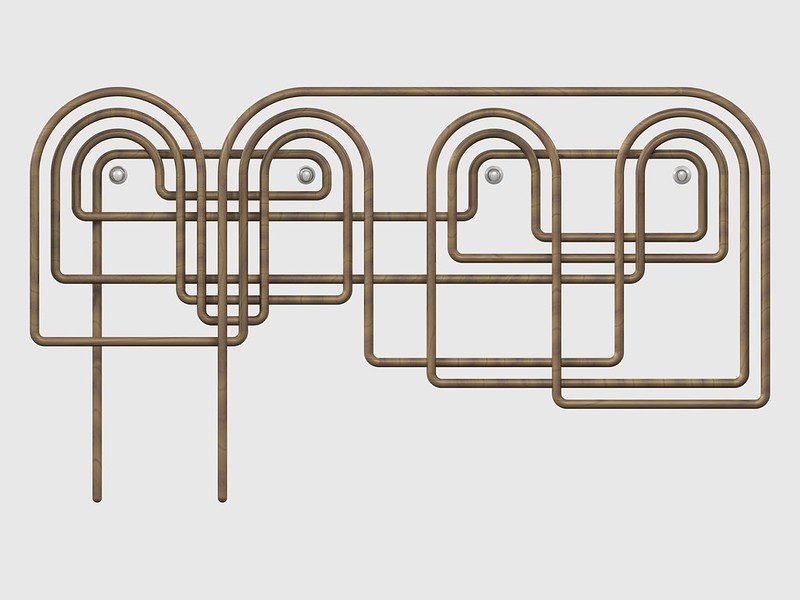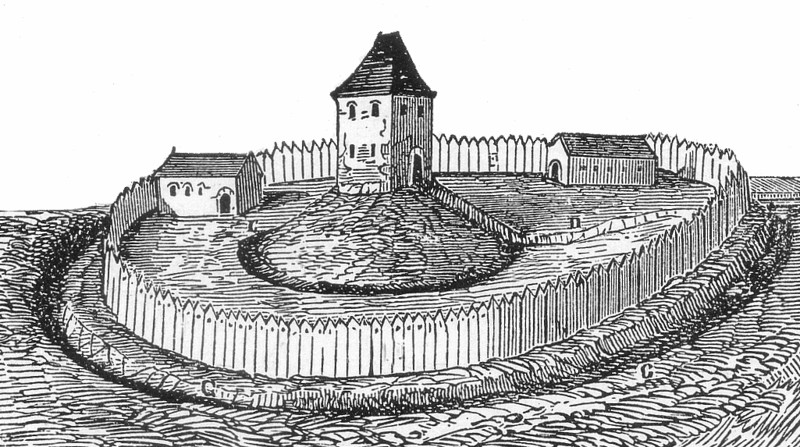
The approach to Macon, Georgia’s 2012 International Cherry Blossom Festival was much safer than it appeared.
Artist Tracy Lee Stum’s anamorphic sidewalk painting took two days to create.

The approach to Macon, Georgia’s 2012 International Cherry Blossom Festival was much safer than it appeared.
Artist Tracy Lee Stum’s anamorphic sidewalk painting took two days to create.

“Here is an old favorite of mine that completely stumped me once when I was a student,” writes Jeff Hooper in Crux Mathematicorum. Suppose that each square in this 3×7 grid is painted red or black at random. Show that the board must contain a rectangle whose four corner squares are all the same color.
When James Chambers and his colleagues discovered a new myxobacterium in North Wales in 2020, they noted that they’d found it near Llanfairpwllgwyngyllgogerychwyrndrobwllllantysiliogogogoch, the village with the longest name in Europe.
So they named it Myxococcus llanfairpwllgwyngyllgogerychwyrndrobwllllantysiliogogogochensis.

A mathematical oddity: Removing any of these four nails will cause the entire rope to fall.
By Flickr user fdecomite. More at the link below.
(Erik D. Demaine, et al., “Picture-Hanging Puzzles,” Theory of Computing Systems 54:4 [May 2014], 531-550.)
chevelure
n. a head of hair
abditive
adj. hidden
protreptic
n. a writing intended to exhort or instruct
revolute
v. to imbue with revolutionary spirit
For Histiaeus, when he was anxious to give Aristagoras orders to revolt, could find but one safe way, as the roads were guarded, of making his wishes known; which was by taking the trustiest of his slaves, shaving all the hair from off his head, and then pricking letters upon the skin, and waiting till the hair grew again. Thus accordingly he did; and as soon as ever the hair was grown, he despatched the man to Miletus, giving him no other message than this — ‘When thou art come to Miletus, bid Aristagoras shave thy head, and look thereon.’ Now the marks on the head, as I have already mentioned, were a command to revolt.
— Herodotus, Terpsichore

In 1962, determined to start life anew, Yorkshire newspaper editor Brendon Grimshaw purchased little Moyenne Island in the Seychelles for £8,000. He remained there for the next 40 years. In that time Grimshaw and an assistant planted 16,000 trees by hand, built three miles of nature paths, attracted 2,000 new birds, and became caretakers of 120 giant tortoises. The island now hosts two thirds of all plants endemic to the Seychelles.
Grimshaw once turned down an offer of $50 million for the island, saying that he didn’t want to see it become a holiday destination for millionaires. Instead, in 2008 it was named a national park. Grimshaw died in 2012, but today a warden is posted on the island to collect entrance fees from tourists.
From reader Éric Angelini:
Call this S1:
FIRST, SECOND, THIRD, FOURTH, FIFTH, SIXTH, SEVENTH, EIGHTH, NINTH, TENTH, ELEVENTH, …
Consider it both a string of letters and a list of instructions: We are to underline the indicated letters, in order. That’s pretty straightforward — we’ll underline the first letter, then the second, then the third, and so on, ultimately reproducing S1.
Suppose we start the list with SIXTH, rather than FIRST. Now our first instruction is to underline the sixth letter, which is the S in SECOND. After that we underline the second letter in the string, as before, and the third, and so on. Only the very first letter, the F in FIRST, has been overlooked, and we can remedy that by putting FIRST in the sixth position in the list. With that swap all is well:
S6 = SIXTH, SECOND, THIRD, FOURTH, FIFTH, FIRST, SEVENTH, EIGHTH, NINTH, TENTH, ELEVENTH, …
Similarly, if the list starts with EIGHTH we can get everything underlined with just a single swap:
S8 = EIGHTH, SECOND, THIRD, FOURTH, FIFTH, SIXTH, SEVENTH, FIRST, NINTH, TENTH, ELEVENTH, …
Éric asks, “What about starting S9 with NINTH? How many swaps do we need to reproduce S9? This is more tricky!”
See the answer by Hans Havermann at the bottom of this page.
(Thanks, Éric.)

In 2005, philosopher Nicholas Shackel identified a form of argument in which an arguer claims to defend a controversial position while retreating, under pressure, to a more supportable one. He likened it to a medieval castle defense known as the motte and bailey, in which a stone tower, the motte, is surrounded by an area of open land, the bailey. If maurauders invade the bailey, the defender retreats to the motte, and when the attackers have given up he can reoccupy the bailey.
“For my purposes the desirable but only lightly defensible territory of the Motte and Bailey castle, that is to say, the Bailey, represents a philosophical doctrine or position with similar properties: desirable to its proponent but only lightly defensible,” Shackel wrote. “The Motte is the defensible but undesired position to which one retreats when hard pressed.”
By withdrawing as needed to a better-supported claim, a skilled arguer can pretend greater security than he’s established, and even accuse his critics of misrepresenting his position. Other writers have suggested that this is a common tactic in pseudoscience.
(Nicholas Shackel, “The Vacuity of Postmodernist Methodology,” Metaphilosophy 36:3 [April 2005], 295–320.)